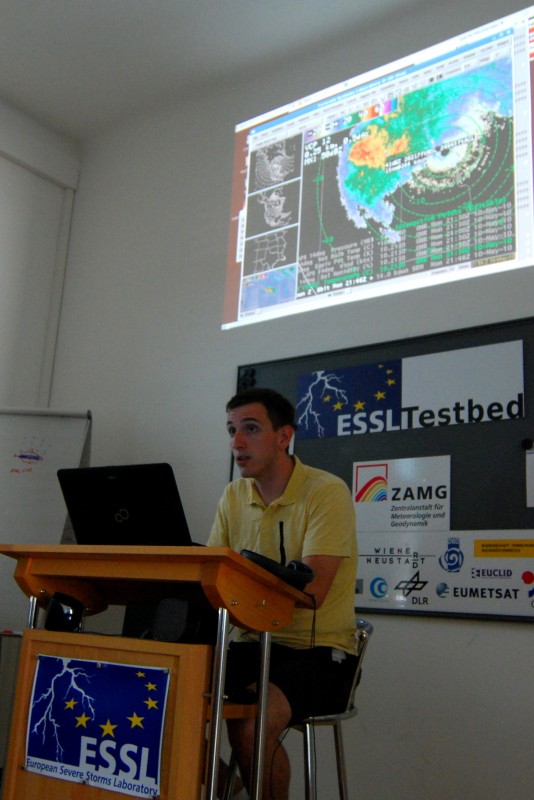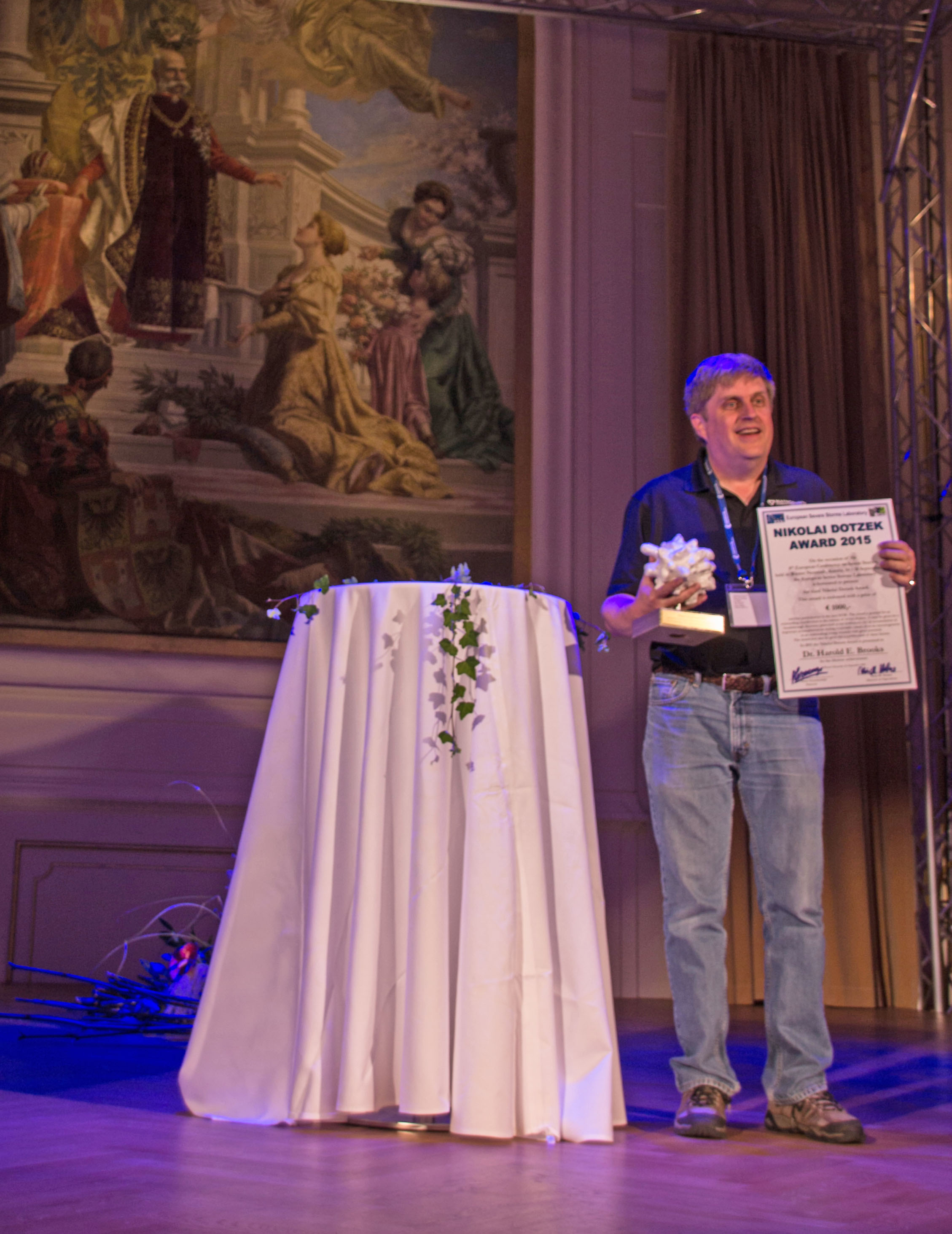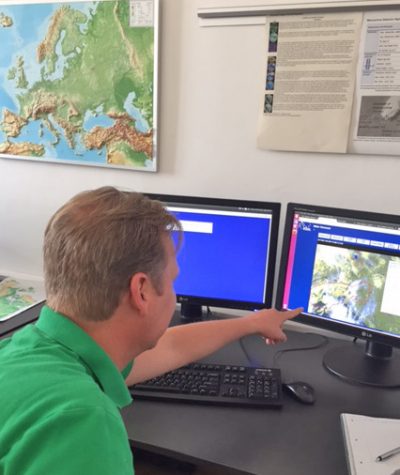
Weather doesn’t stop at borders. Nowhere is this more clear than in Europe, where two researchers working at the NOAA National Severe Storms Laboratory went shoulder to shoulder with researchers in the European Severe Storms Laboratory Testbed this summer. The goal was to collaborate on forecast products and learn how NSSL technologies are used abroad.
“As scientists and meteorologists, we need to continue to talk because that’s how true knowledge transfer occurs,” said Darrel Kingfield, University of Oklahoma Cooperative Institute for Mesoscale Meteorological Studies researcher working at NSSL. “ESSL researchers came to work with us in the NOAA Hazardous Weather Testbed a couple of years ago and this year we went to them.”
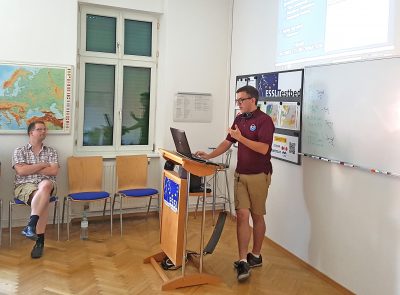
During its sixth year, the ESSL Testbed program evaluated forecasts for high-impact weather. Like the HWT, the ESSL testbed serves as a forum to stimulate interaction between product developers and operational forecasters from throughout Europe. Also, lectures from several local and international experts help testbed participants enhance their knowledge and skills.
Different geography, systems
Kingfield and NSSL Research Scientist Adam Clark each spent a full week at ESSL’s testbed. What struck them was the difference in geography between the United States and Europe. Clark said ingredients needed for severe weather come together much differently in Europe than the U.S.
“You have the Mediterranean Sea and the Alps and that affects much of their weather,” Clark said.
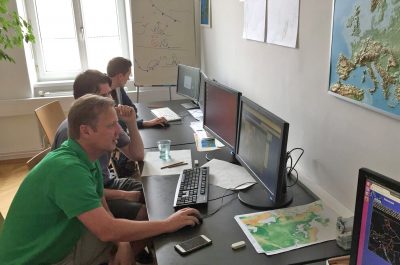
Along with geographical differences, Clark and Kingfield learned about the different weather prediction and monitoring systems operated by each European country. A variety of forecasting tools and methods are used throughout Europe, from government operated to privatized systems. This results in data, forecasting and verification inconsistencies.
“For example, after a tornado occurs in the U.S., officials observe and record where it occurred and how severe it was,” Kingfield explained. “Europeans rarely go out and assess tornado damage after a storm. Those surveys are reserved for most damaging events.”
As a result, Europe’s tornado database is not nearly as complete as the United States.
Sharing tools and techniques
While in the testbed, Kingfield and Clark gazed upon a few familiar products.
“The German Weather Service is using a lot of the same techniques developed at NSSL to interpret radar data,” Kingfield said. Some European meteorologists use several products developed in the U.S. by NSSL and OU CIMMS researchers. For instance, one technique allows them to use radar data to visualize the possible track of a tornado based on the storm’s rotation.
Collaboration is an important tool for forecasters and researchers. Participation in ESSL’s testbed allows researchers like Kingfield and Clark to share new technologies, experience new techniques and learn new systems. Opportunities like this allow researchers to collaborate on new products and technology, ultimately leading to better forecasts and warnings for the American public.

